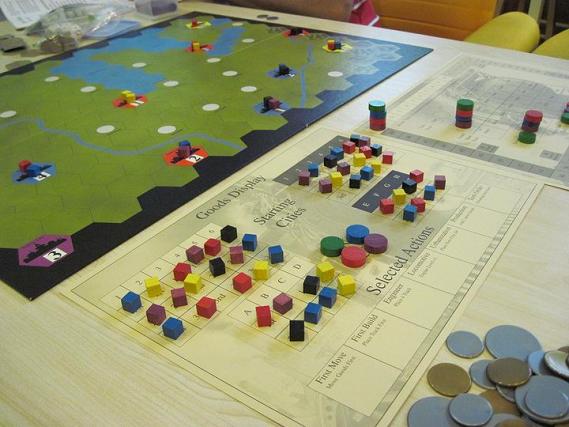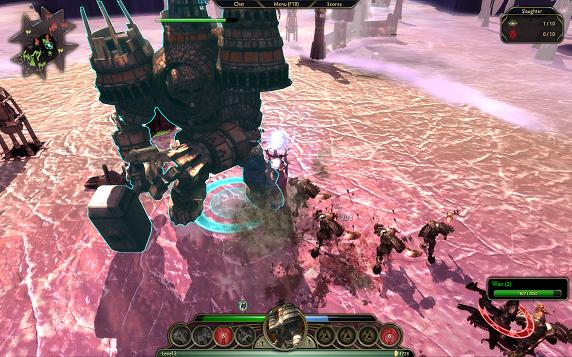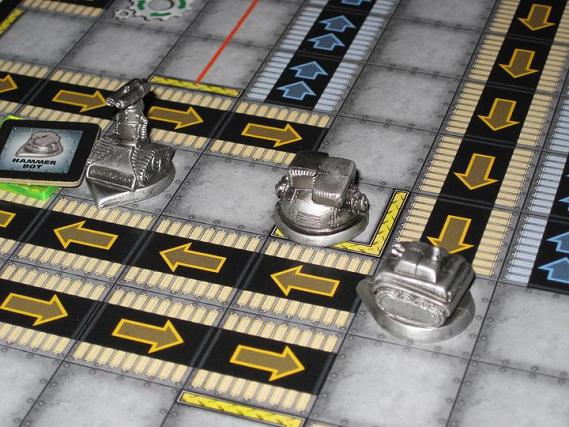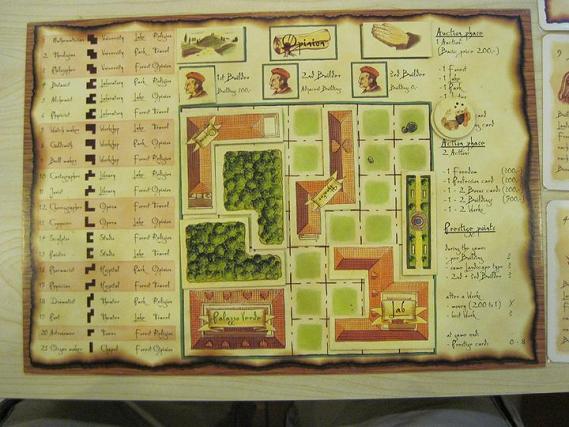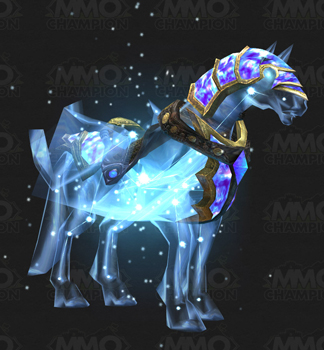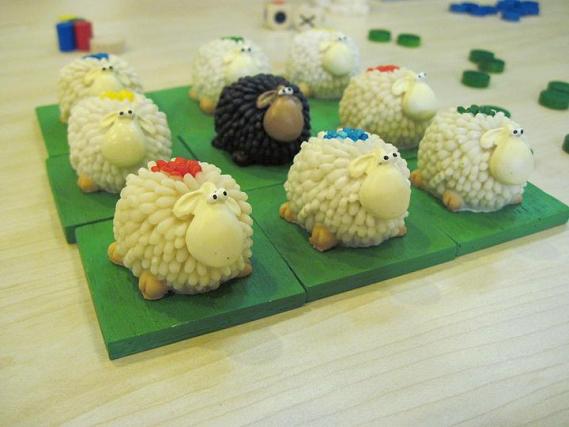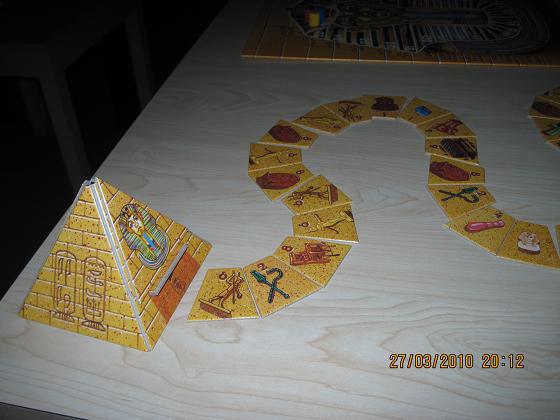We had a session at Carcasean recently for which we forgot to take along our camera, so no photos were taken. Since we only played a series of lighter games during this session, I’ll just combine them in a post detailing some of my thoughts on them rather than writing extended reviews.
Airships
- Seriously good dice game. I really like the idea of building up a toolbox of dice of different types, various bonuses and fixed value dice and using the toolbox to gain scores.
- It’s a dice game so some measure of randomness is to be expected. But it’s surprisingly restrained. For example, the white dice have 1, 1, 2, 2, 3, 3 on their faces, greatly restricting the range of possibilities. It’s also very neat how failing a roll gets you a +1 token and three of these things can be cashed in to get another rolling attempt.
- It’s by the same designer, Andreas Seyfarth, as Puerto Rico! I didn’t know that when we played.
- Apparently the differently colored boxes are meant to represent the various components that make up an airship but I don’t get the impression that there’s any meaningful distinction between them. I don’t really see that the game fits the theme either but at least it’s a rather unique and cool theme.
- The cool factor alone makes me feel tempted to buy this but it’s really not the best game for two players. I can totally see the appeal of playing this with more casual players however.
